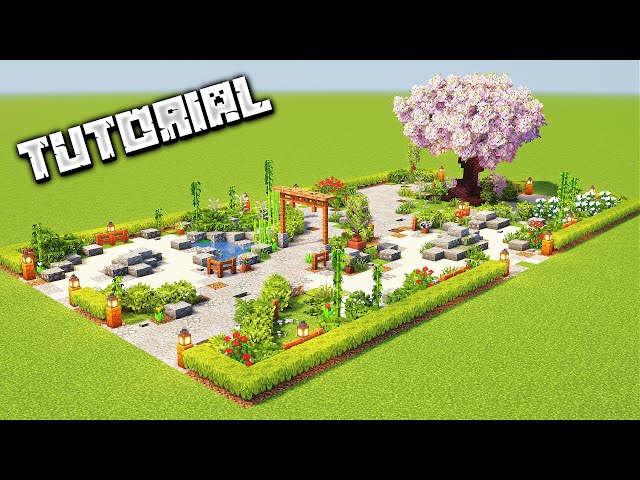Introduction
Creating a garden in Minecraft is more than just placing flowers; it’s an art that combines creativity, strategy, and knowledge of the game’s mechanics. Whether you’re a beginner or an experienced player, making a garden in Minecraft enhances your gameplay by adding beauty, utility, and a personal touch to your world. This article covers everything you need to know to build a thriving, aesthetic garden—from planning and materials to planting and maintenance.
Why Build a Garden in Minecraft?
Gardens serve multiple purposes in Minecraft:
- Aesthetic appeal: Gardens beautify your base or village, making your Minecraft world more immersive.
- Resource generation: Growing crops like wheat, carrots, potatoes, and beetroot provides a renewable food source.
- Mob attraction and defense: Certain plants can deter mobs or attract bees, which help with crop pollination.
Building a garden not only boosts your survival chances but also showcases your building expertise and creativity.
Planning Your Minecraft Garden
Choose the Right Location
Selecting an optimal location is crucial. Consider these factors:
- Sunlight: Gardens require direct access to sunlight for crops to grow efficiently.
- Water access: Placing water nearby ensures your crops stay hydrated, speeding growth.
- Protection: Build your garden within walls or fences to protect it from mobs like zombies and creepers.
Design and Layout
Think about the size and style of your garden. Popular garden types include:
- Traditional farm plots: Rows of crops with water channels.
- Flower gardens: Decorative spaces with various flowers for aesthetics and bee attraction.
- Themed gardens: Japanese zen gardens, herb gardens, or fantasy-style gardens featuring custom landscaping.
Utilize pathways, benches, and lighting to add realism and charm.
Essential Materials and Tools for Gardening
Key Items to Gather
- Hoe: Use a hoe to till dirt blocks into farmland, which is essential for planting crops.
- Seeds and saplings: Gather wheat seeds, carrot and potato crops, and saplings for trees.
- Water buckets: Create water sources to irrigate your farmland.
- Bone meal: Speeds up plant growth, saving time.
Optional Decorative Blocks
- Fences and gates: Protect your garden from mobs.
- Flower pots and lanterns: Add decorative touches and lighting.
Step-by-Step Guide to Making a Minecraft Garden
- Clear the land: Remove grass and obstacles to create a flat surface.
- Till the soil: Use your hoe on dirt or grass blocks to prepare farmland.
- Add water: Dig water trenches or place water blocks within 4 blocks of farmland to hydrate crops.
- Plant seeds or saplings: Right-click farmland with seeds or saplings to plant.
- Use bone meal sparingly: Apply bone meal to accelerate growth when needed.
- Build protective structures: Surround your garden with fences or walls to keep mobs out.
- Add lighting: Place torches or lanterns to prevent hostile mobs from spawning inside the garden at night.
Advanced Gardening Tips and Tricks
- Beehives and bees: Introduce bees to pollinate crops, which increases growth speed. Create a bee-friendly garden by planting flowers.
- Crop rotation: Rotate crops to optimize resource use and prevent depletion.
- Automated farms: Use redstone mechanics to automate watering, harvesting, and replanting.
- Use composters: Convert excess plant material into bone meal efficiently.
Conclusion
Making a garden in Minecraft is a rewarding project that combines function and beauty. By carefully planning your garden’s location, design, and materials, you can create a vibrant space that enhances your Minecraft world. Remember to protect and maintain your garden to keep it thriving. Whether you build a simple crop farm or an elaborate floral paradise, your garden will be a testament to your Minecraft expertise and creativity. Ready to start planting? Grab your hoe and get growing!
